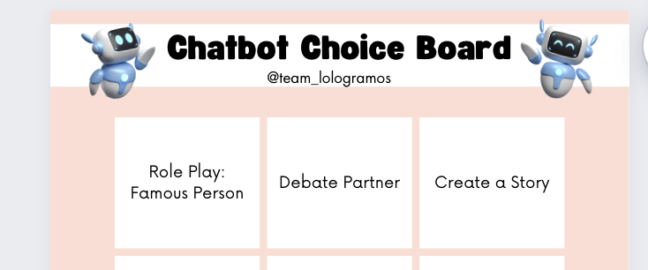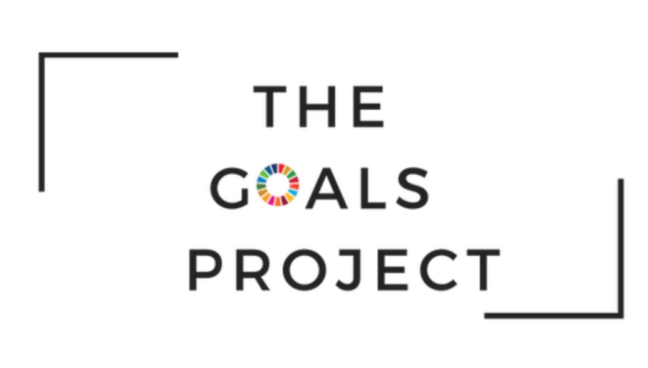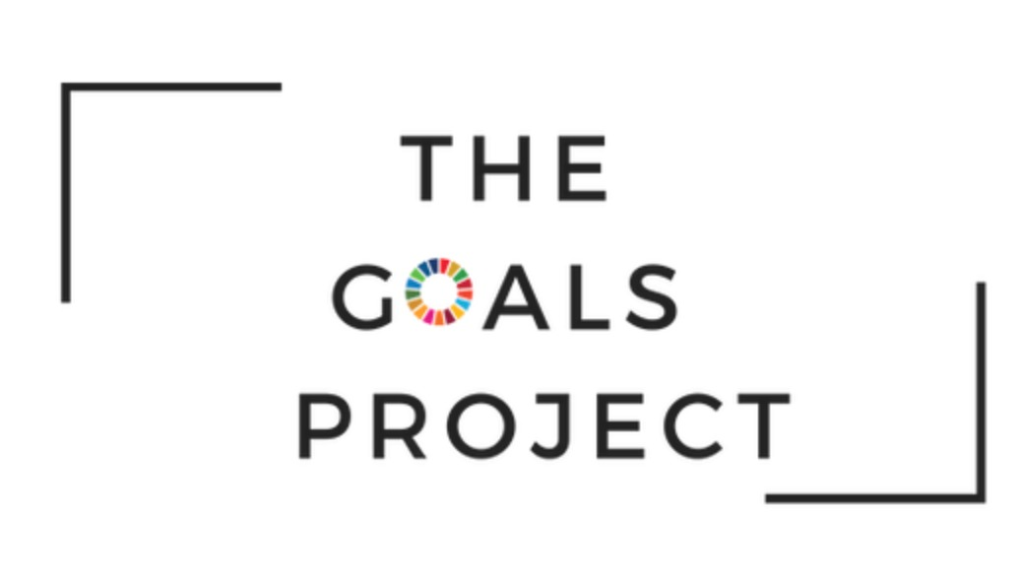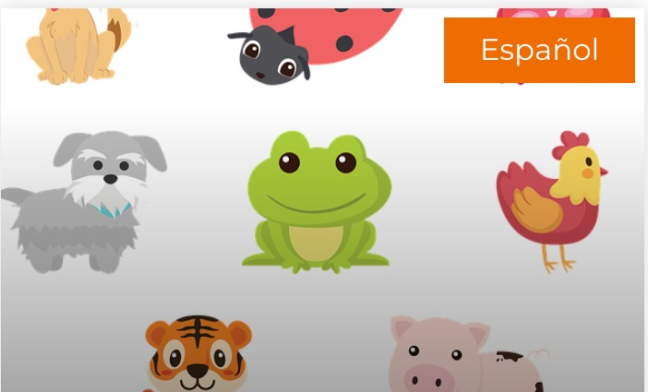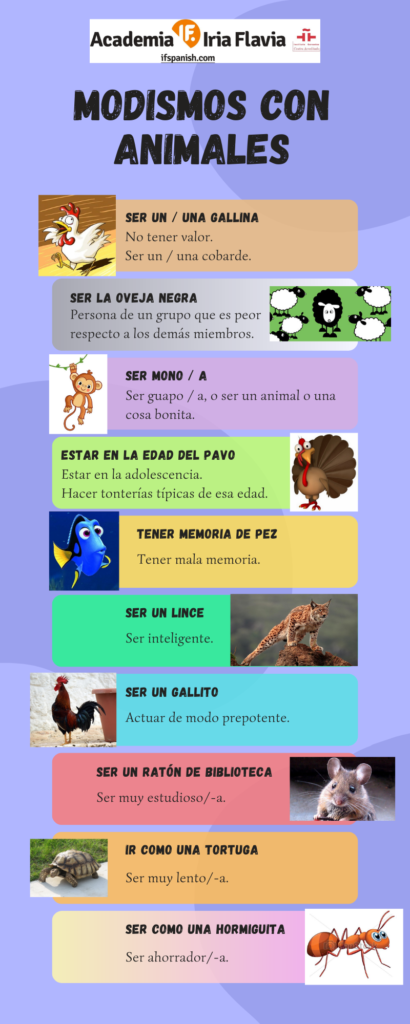by Noemí Rodríguez (LTL Contributor)
After several months of highlighting different Generative AI Tools for the language classroom, the most exciting has been using conversational chatbots. The idea that students can practice their language skills in a low-stakes, non-judgmental way, available at any time and personalized to fit their language level is quite revolutionary. AI has the power to enhance our students’ language learning experience and also provide limitless opportunities to practice speaking in the target language.
As with any AI tool, educators must design prompts that are specific to the task and adhere to the intended learning outcome. Within your prompt design, it is important to share who the chatbot IS, the language students are learning, language proficiency targets and specific key phrases/vocabulary you would like the chatbot to use. You can also set up your chat bot to be engaging, kind, funny, creative, etc. For example, with your novice learners, tell the chatbot to limit the questions and responses to a certain number of words for a student who is learning another language, repeat & recycle high frequency vocabulary and be supportive & helpful in the replies provided.
In what ways can our students practice their language learning? Here are a few scenarios, prompts and a Chatbot Choice Board for you to copy and share with your language colleagues (or students!).
Chatbot Uses & Sample Prompts
Language Tutor – Consider designing a tutor for your students to practice their conversational skills or be provided with direct feedback given your language class, level and current unit of study.
Sample Prompt – You are a friendly Spanish tutor, ‘Srta Bot’. Engage the student in a simple dialogue in Spanish and discuss what the student is like, characteristics about themselves, family members, basic greetings, foods, preferences in activities, clothing items and weather conditions. Limit your questions and responses to simplistic, no more than 30 words. Repeat and recycle frequently used vocabulary in Spanish. Be funny and engaging.
Role Play – A chatbot can be anyone….no, really….ANYONE! Who would your students like to speak in the target language with? Anyone from the past, present or even future can “come to life” as an interactive chatbot. Or how about a particular professional to interact with like a nutritionist, an astronaut or a climate change activist? You can also transform your chatbots into animals – imagine what your dog may say to you if they could?
Sample Prompt – You are Greta Thunberg, climate activist, engaging in a discussion about the Amazon rainforest’s climate crisis with a novice French learner / student. Use simple sentences and questions to discuss the climate change effects on the rainforest and its inhabitants. Repeat and recycle cognates from the Spanish language related to the Amazon rainforest such as desforestation, climate change, animals.
Debate Partner – Having students engage in a lively discussion about a topic that is relevant to your unit of study can be exciting and the chatbot can point out some important points that students may have not considered before!
Sample Prompt – You are engaged in a debate about education. You will play the part of a debater who supports the opinion: not everyone should have access to public education. The student, who is learning Spanish, will play the part of a debater who supports the opposite opinion: everyone should have access to education regardless of age or gender. State your opinion and ask simple follow up questions, limit your questions and answers to an A2 or Novice High proficiency level.
Design A Story! – Students can work one on one with a chatbot to come up with a story together! A creative way for language learners to design a story about any topic of study, create an engaging story for an intended audience and consider questions as well – to design their own adventure within a story!
Sample Prompt – You are co-writing a narrative story with a student who is learning the Spanish language and has an A1 or Novice Mid proficiency level. The story involves three to four characters, a plot, conflict, rising and falling action and a conclusion that resolves the conflict. Be creative and original in storytelling. Provide helpful feedback to help correct grammar and/or spelling mistakes.
Assessment Prep/AP Lang Practice – Before an upcoming performance assessment, design a chatbot to serve as a conversational buddy to review essential questions and unit performance objectives.
Sample Prompt – You are a teacher of Spanish who is assisting a student practice their language skills before an upcoming integrated performance assessment. You review the following essential questions by engaging in a dialogue to help the student practice respond and share their thoughts about: What makes up a balanced lifestyle? How do you define wellness in your community? What routines, habits and foods contribute to healthy living? Be sure to keep the conversation all about a balanced lifestyle and how we maintain wellness in our daily lives. Repeat and recycle key vocabulary that involve cognates from the Spanish language. Be supportive and provide feedback related to the student’s use of grammar and spelling when appropriate.
With these different chatbot uses in mind, there are two current platforms that I have used which allow language teachers to generate these bots for students and they do not require any identifiable personal information from the student, such as emails or full names. The student is an anonymous participant but perhaps uses their initials only or an assigned numerical code, so the teacher can later review the conversation on their end once completed.
Chatbot Design Platforms & Resources
Mizou – It allows teachers to design their own chatbots, search within a community of available chatbots, set their own to “public” or “private” and students are provided with a link to access the session, once the teacher has made it “live”. You can view tutorials on their site.
SchoolAI – This AI tool has MANY capabilities, as they are considered an “all-in-one” platform for educators. The site has “spaces” available for teachers to set up for students to practice their language skills.
*For both of the above tools and many others, I have created and shared simple five minute or less tutorial videos on the Lo Logramos Youtube Channel, be sure to subscribe to stay connected to future AI Tools tutorial videos for language educators & language instruction!
*To learn more about how to transform your language classroom with AI, you can check out my newly launched asynchronous course: The AI Tools Institute for Language Classrooms to assist language teachers of any language! A seven session journey with guiding slideshows, resources, guides, helpful reflective questions and many videos, all in one space!
Chatbot Choice Board
To receive your own copy of the handy Chatbot Choice Board, please head over to the private Team Lo Logramos Facebook Community. There you will be able to request to join our community and later, access the Chatbot Choice Board for use in your language department or with your language students!

Thank you for reading! I hope that you keep experimenting, sharing and learning about how Generative AI can help transform your language classroom and your students’ language learning experience! I do hope we stay connected and feel free to reach out with any questions, wonderings or comments! @team_lologramos
LoLogramos – Get a $5 off discount when you use the code LTL5 at checkout, exceptions may apply
